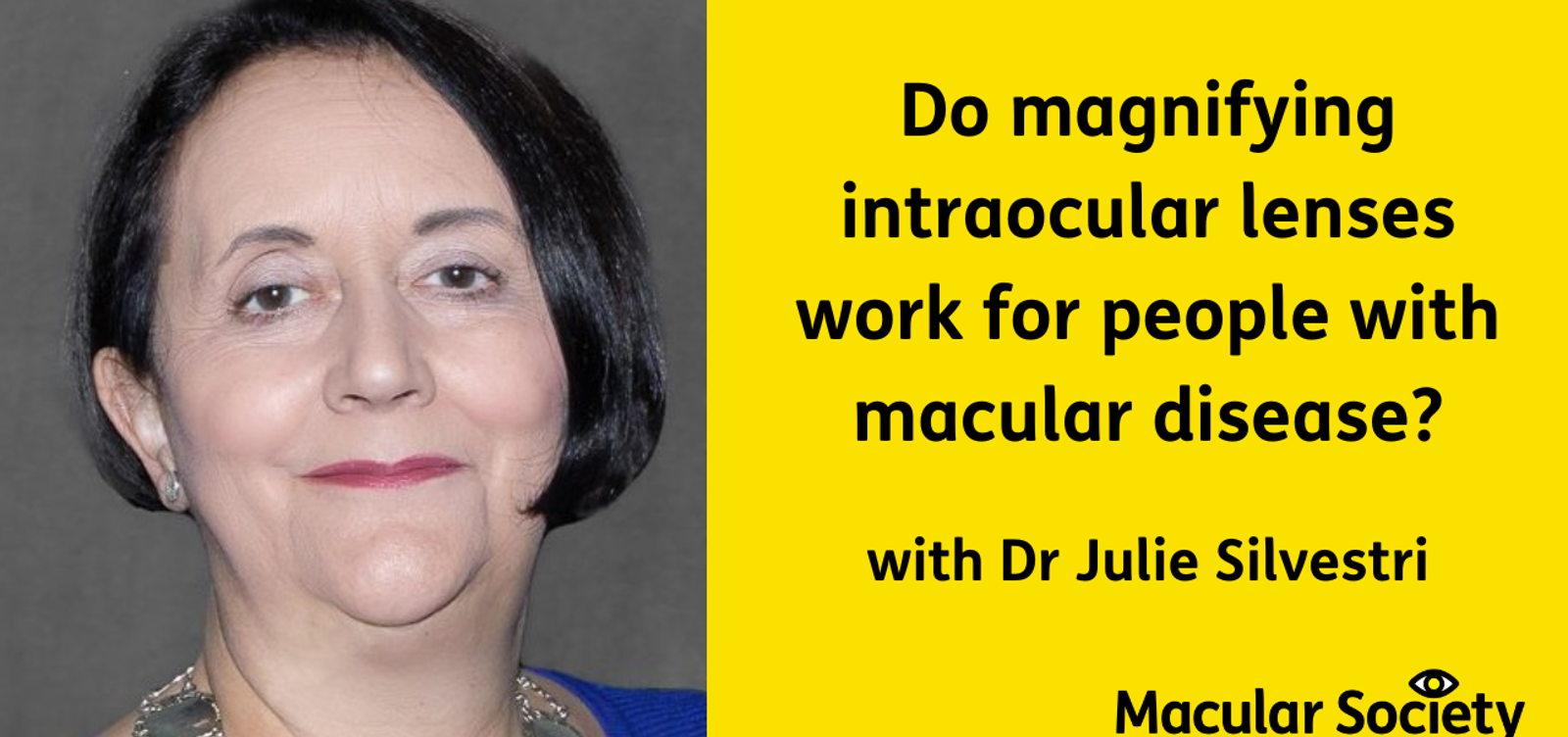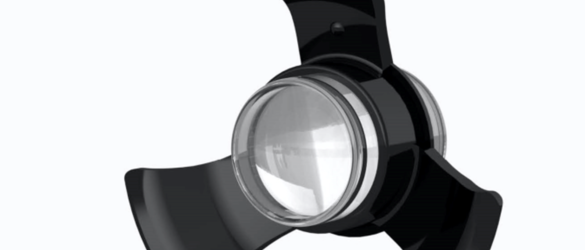All you need to know about implantable magnifying lenses for macular disease
Posted: Monday 25 March 2024
Intraocular lenses (IOLs) were the focus of our My Macular and Me webinar in March, as Dr Julie Silvestri shed light on the potential of these devices, which aim to improve vision for people living with sight loss.
Dr Silvestri, consultant ophthalmic surgeon at Belfast Health and Social Care Trust, highlighted how these lenses have the power to improve clarity of vision and restore independence for people living with age-related macular degeneration (AMD), without the need for a handheld magnifier.
Is there a need for implantable lenses?
According to Dr Silvestri the area of degeneration won’t change, but what she called the ‘blind spots’, become less obvious, and it can be easier to make out what it is you are wanting to focus on.
However, not everyone is able to benefit from lenses, and it often depends on an individual’s level of sight loss as to whether they are effective.
Dr Silvestri said: “At the moment, the only treatment really is for the wet type of AMD although we are hopeful that something will be coming along fairly soon for dry AMD. And despite the anti-VEGF therapies, which are revolutionary, really I'm old enough to remember when, unfortunately, there was nothing.
“So it has been truly amazing but there are still some patients who don't respond, patients who have lost vision before the treatments, and then there are the patients who have inherited retinal degenerations, such as Stargardt disease, who may benefit from these devices. So I think there is a need for these devices.”
Are all magnifying lenses the same?
There are a range of different devices available from the Intraocular Magnifying Telescope (IMT) to the Ori-lens, the Scharioth Macular Lens (SML) and, more recently, the Samsara Vision SING IMT™. These suit people with different sight conditions, and different levels of vision loss.
“Some have more magnification than others,” Dr Silvestri said. “Depending on the level of vision remaining in the eye, it is important to get the best type of magnification.”
What are the advantages and disadvantages?
There are different advantages and disadvantages for each type of implantable lens on the market, particularly when compared to a handheld device. For example, IMTs have been typically bigger, so they may restrict peripheral vision but the Samsara Vision’s SING IMT™ is a modern, smaller telescope – just 10.8 mm in diameter and doesn’t have the same impact.
One specific advantage Dr Silvestri highlighted was the improved visual field the majority of lenses offer.
She said: “One of the most frustrating things for handheld magnifiers is that it reduces, with the more magnification, what you can see, so because it's in the eye, it improves that.
“Some patients find it difficult, if they have arthritis or Parkinson's, to use the handheld magnifier and cosmetically, obviously, the intraocular magnifier is better.”
How safe are they?
“They are generally safe. The devices themselves have been tried and tested. So it's really whether it is the right device for the person and whether it can be used and used comfortably,” she said.
What is the new Samsara Vision SING IMT™?
In the second half of 2023 it was reported eye surgeons in Newcastle had become the first in the UK to give patients with late-stage AMD the pioneering new eye implant, described by Dr Silvestri as “the new kid on the block.”
She explained: “It's still the same glass telescope, it's just got nice soft wings on it, and it goes in like a diver, and then the wings kind of spread out.”
She added: “If you have severe visual impairment, then you really do need the IMT or the new Samsara telescope, even the SML.”
Read more about the Samsara telescope
Which device could work for me?
Communication with your ophthalmologist and arming yourself with as much information as possible is key.
Dr Silvestri advises that your ophthalmologist will make the best judgement because they know the magnification potential of each lens and how much you need, depending on your vision.
Summing up, she explained: “The SML is good for vision about three lines down the chart to just less than the top line. If the vision is very poor, it just doesn't have the magnification, so it's really picking the right device for the person.”
How effective is the device if my sight loss gets worse?
Dr Silvestri suggested that the effectiveness of these devices may vary if your sight changes. Due to the nature of AMD, the lenses are more suited to people who are at the end-stage of their condition.
“If you get something when it's earlier stage, it can progress, of course, but it is hopeful that the anti-VEGF and maybe these newer drugs for the dry AMD can stall,” she warned. “But you do have to be prepared for that, of course.”
Are these lenses available on the NHS?
Unfortunately, they are only available privately at present, but it is hoped through more trials and more evidence gathering that implantable lenses could become available on the NHS.
All you need to know - Watch Dr Silvestri explain the ins and outs of implantable magnifying lenses for people with macular disease.
More on the Samsara telescope
Eye surgeons in Newcastle have become the first in the UK to give patients with late-stage age-related macular degeneration (AMD) a pioneering new eye implant.
See our other webinars
Watch our latest webinars online. We asked the experts the questions you wanted answered: on food, staying safe at the eye clinic, and different macular conditions. Catch up with any webinars you missed, or watch again in your own time.





